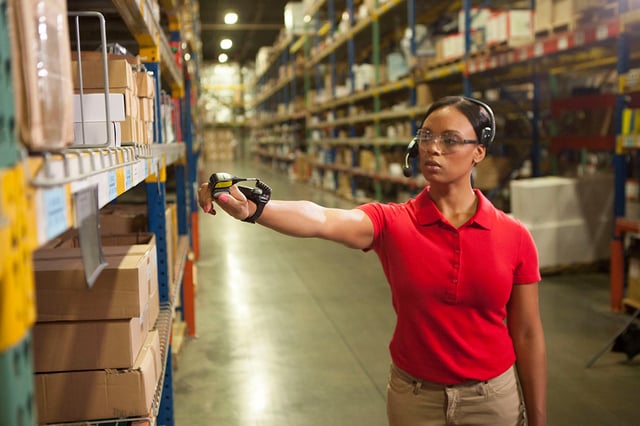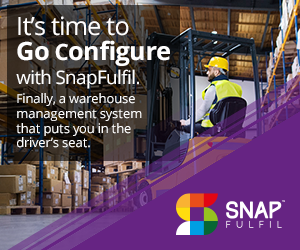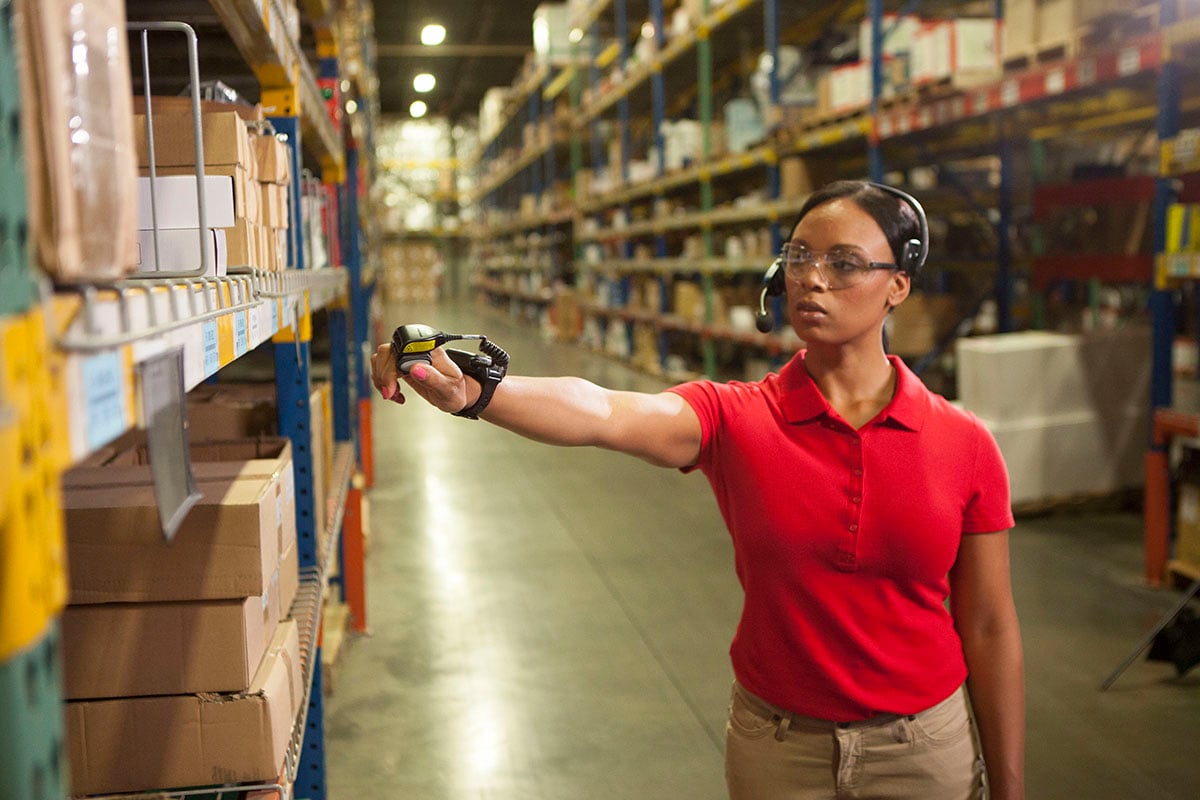Industry comment: Warehouse wearables
Wearables technology (such as the ring scanner shown here) is generally deployed when the user wants to ensure a hands-free environment for their operatives. Wearable devices reduce breakages and make sound health and safety sense given their hands- and eye-free environment. But they can also boost productivity by increasing picking speeds by up to 25% with near-100% accuracy.

Wearables come into their own when picking and packing smaller items, if both hands are needed: for example packing a mixed case of wine, or holding a postal envelope or packet in one hand and putting a product for dispatch into it with the other. Traditional handheld scanners and other handheld devices have to be propped on a flat surface in these circumstances, or holstered – neither of which is user-efficient.
For smaller companies with a more limited budget wearables are a productivity-enhancing but also lower-cost alternative to voice-driven devices (which can cost £5,000+ more per user). For that reason alone I anticipate continued growth in warehouse wearables from companies looking for better productivity at a more affordable price.
As with all warehouse technology, wearables will not meet all the needs of an operation: for example, they are not generally suitable for users receiving full pallets. And as with all warehouse planning it is wise to invest in the right mix of devices, as no single type of product will meet all your needs.



